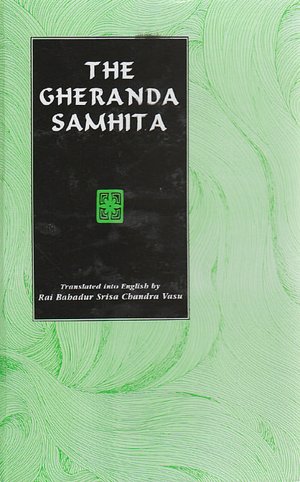1.1 atha yogānuśāsanam
1.2 yogaścittavṛtti nirodhaḥ
1.3 tadā draṣṭuḥ
svarūpe'vasthānam
1.4 vṛttisārūpyamitaratra
1.5 vṛttayaḥ pañcatayyaḥ kliṣṭākliṣṭāḥ
1.6 pramāṇaviparyayavikalpanidrāsmṛtayaḥ
1.7 pratyakśānumānāgamāḥ pramāṇāni
1.8 viparyayo mithyājñānamatadrūpapratiṣṭham
1.9 śabdajñānānupātī vastuśūnyo
vikalpaḥ
1.10 abhāvapratyayālambanā
vṛttirnidrā
1.11 anubhūtaviṣayāsaṁpramoṣaḥ
smṛtiḥ
1.12 abhyāsavairāgyābhyāṁ tannirodhaḥ
1.13 tatra
sthitau yatno'bhyāsaḥ
1.14 sa tu
dīrghakālanairantaryasatkārāsevito dṛḍhabhūmiḥ
1.15 dṛṣṭānuśravikaviṣayavitṛṣṇasya vaśīkārasaṁjṇā
vairāgyam
1.16 tatparaṁ puruṣakhyāterguṇavaitṛṣṇyam
1.17 vitarkavicārānandāsmitārūpānugamāt
saṁprajñātaḥ
1.18 virāmapratyayābhyāsapūrvaḥ saṁskāraśeṣo 'nyaḥ
1.19 bhavapratyayo
videhaprakṛtilayānām
1.20 śraddhāvīryasmṛtisamādhiprajñāpūrvaka itareṣām
1.21 tīvrasaṁvegānāmāsannaḥ
1.22 mṛdumadhyādhimātratvāt tato'pi viśeṣaḥ
1.23 īśvarapraṇidhānādvā
1.24
kleśakarmavipākāśayairaparāmṛṣṭaḥ
puruṣaviśeṣa īśvaraḥ
1.25 tatra niratiśayaṁ sarvajñabījam
1.26 sa eṣa pūrveṣāmapi guruḥ kālenānavacchedāt
1.27 tasya
vācakaḥ praṇavaḥ
1.28
tajjapastadarthabhāvanam
1.29 tataḥ pratyakcetanādhigamo'pyantarāyābhāvaśca
1.30
vyādhistyānasaṁśaya
pramādālasyāvirati bhrāntidarśanālabdha bhūmikatvānavasthitatvāni cittavikṣepāste
'ntarāyāḥ
1.31 duḥkhadaurmanasyaṅgamejayatvaśvāsapraśvāsā vikṣepasahabhuvaḥ
1.32 tatpratiṣedhārthamekatattvābhyāsaḥ
1.33 maitrīkaruṇāmuditopekṣāṇāṁ sukhaduḥkhapuṇyāpuṇya
viṣayāṇāṁ bhāvanātaścittaprasādanam
1.34 pracchardanavidhāraṇābhyāṁ vā prāṇasya
1.35 viṣayavatī vā pravṛttirutpannā manasaḥ sthitinibandhinī
1.36 viśokā vā
jyotiṣmatī
1.37 vītarāgaviṣayam vā cittam
1.38
svapnanidrājñānālambanam vā
1.39
yathābhimatadhyānādvā
1.40 paramāṇuparamamahattvānto asya vaśīkāraḥ
1.41 kṣīṇavṛtterabhijātasyeva maṇergrahītṛgrahaṇagrāhyeṣu tatsthatadañjanatā samāpattiḥ
1.42 tatra
śabdārthajñānavikalpaiḥ
saṅkīrṇā
savitarkā samāpattiḥ
1.43 smṛtipariśuddhau svarūpaśūnyevārthamātranirbhāsā
nirvitarkā
1.44 etayaiva
savicārā nirvicārā ca sūkṣma
viṣaya vyākhyātā
1.45 sūkṣmaviṣayatvaṁ cāliṅgaparyavasānam
1.46 tā eva
sabījaḥ samādhiḥ
1.47
nirvicāravaiśāradye 'adhyātmaprasādaḥ
1.48 ṛtaṁbharā tatra prajñā
1.49 śrutānumānaprajñābhyāmanyaviṣayā viśeṣārthatvāt
1.50 tajjaḥ saṁskāro
'nyasaṁskārapratibandhī
1.51 tasyāpi
nirodhe sarvanirodhānnirbījaḥ
samādhiḥ





